It sounds like a line from a bad joke from a stand-up comic – did you hear the one about the person who bought a brand new car without a rear windscreen? Except that, Polestar, for one, isn’t laughing.
This is the new Polestar 4 and, yes, it has no rear windscreen. The driver sees out of the back with a rear facing camera, with a display where the rear-view mirror would traditionally be.
More of that later. Right now though, the 4 is a four-door saloon/ coupe sitting above the 2 and arriving at the same time as the new 3 SUV into Polestar retailers. From having had just one model for much of its UK-based time, Polestar will now suddenly have three.
POLESTAR 4 – DESIGN
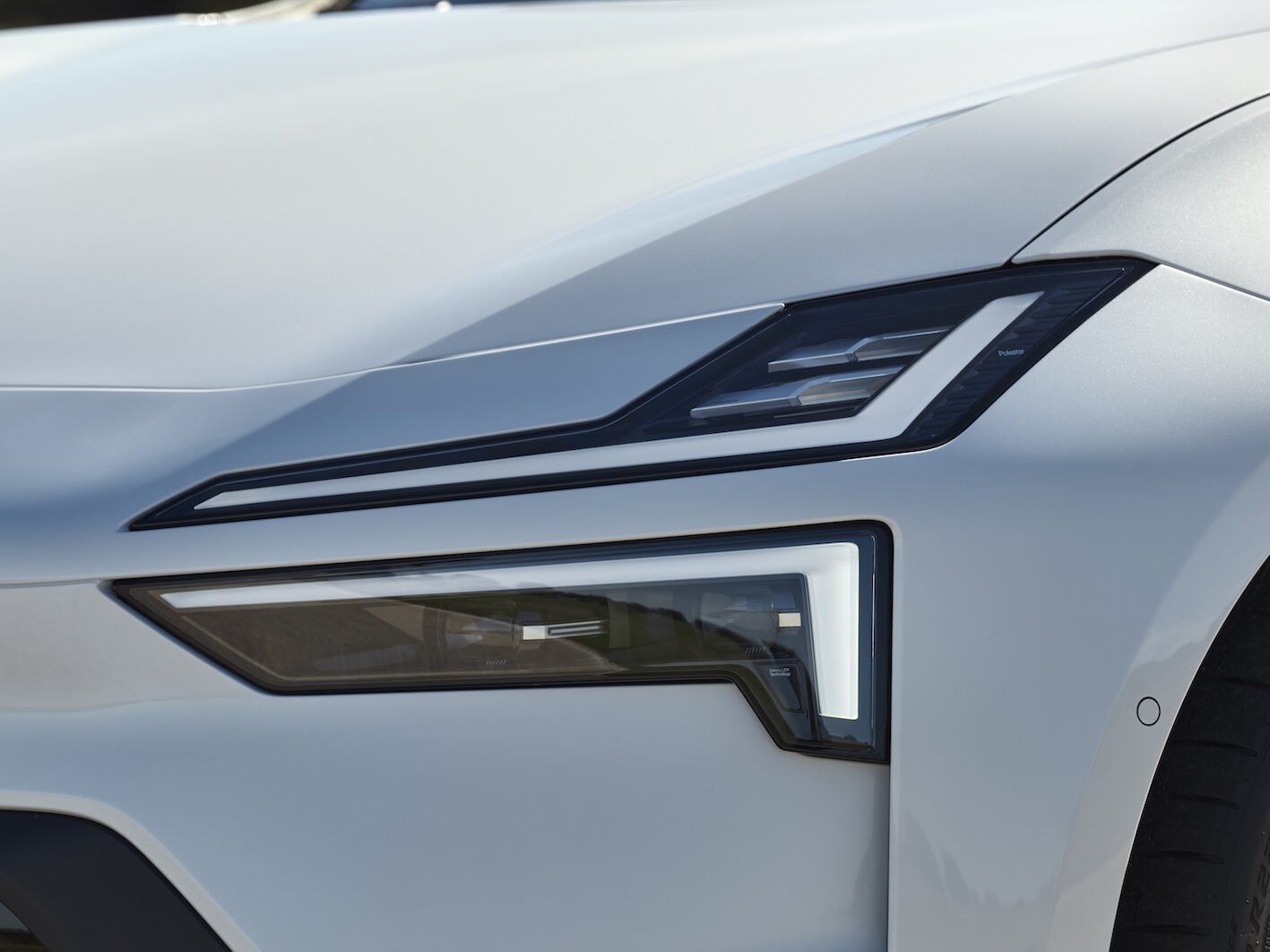
A four-door saloon? Er, hasn’t Polestar got one of those already with the 2. Well, strictly speaking yes, but the 4 is a step up in size, generation and, starting at a shade under £60,000, price too.
It’s a very different prospect in terms of looks too. While the 2 is a very traditional three-box design, this 4 is sleek, smooth with a stunning design. The chunky, pop-out door handles are the same and that’s pretty much the only thing to link them.
We like the look of the 2 but we love the look of this 4. Split double-hockey stick-shaped lights, a sleek roofline and an extended panoramic roof that doesn’t make that lack of a rear screen immediately obvious. We’re not fans of the lettering that continues on the lower part of the front doors (again as with the 2), but other than that, make no mistake, this is a handsome car.
POLESTAR 4 – POWER AND RANGE
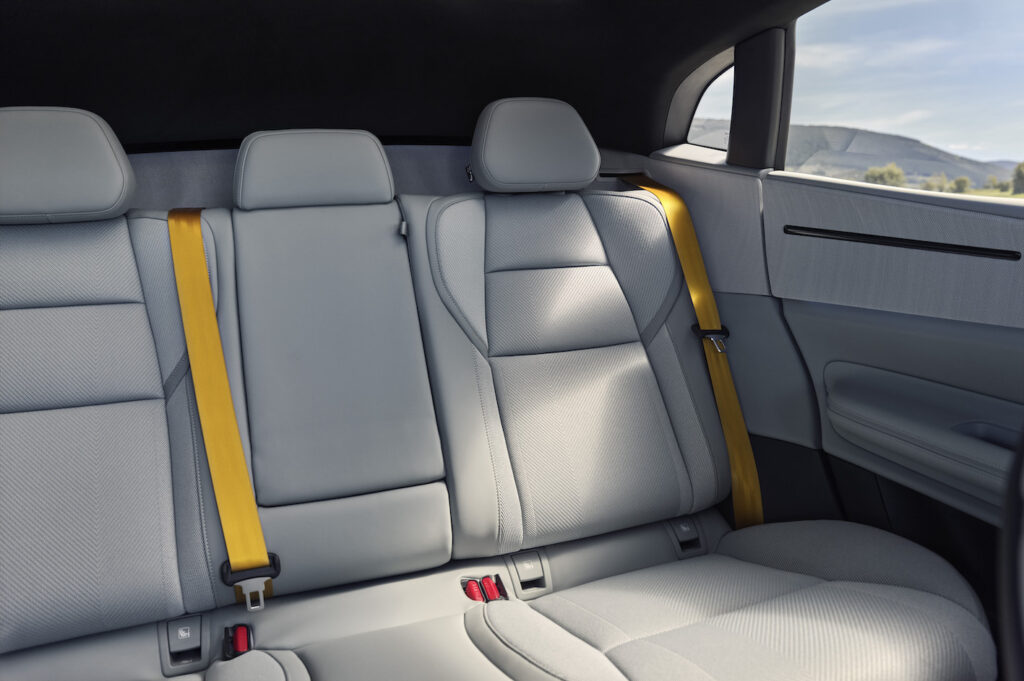
All Polestar 4s come with a whopping 100kWh battery in either single motor (272bhp) or dual motor (544bhp) forms. That’s enough to give them either a 385 or 367 mile range respectively.
Arguably it’s a little academic above 300 miles, but both are a considerable chunk over the BMW i5 with a 83.9kWh battery and 356 mile range.
With the equivalent of 544bhp under your right foot though, performance isn’t exactly lacking with the dual motor model managing the 0 to 62mph sprint in just 3.8 seconds – the single motor manages it in 7.1. Both have a 124mph top speed.
Polestar claims an efficiency of 3.5mls/kWh for the single motor and we managed a fraction under that during our reasonable spirited drive. It also boasts a 200kW DC charging speed giving you 10-80% of charge in just half an hour.
POLESTAR 4 – ON THE ROAD
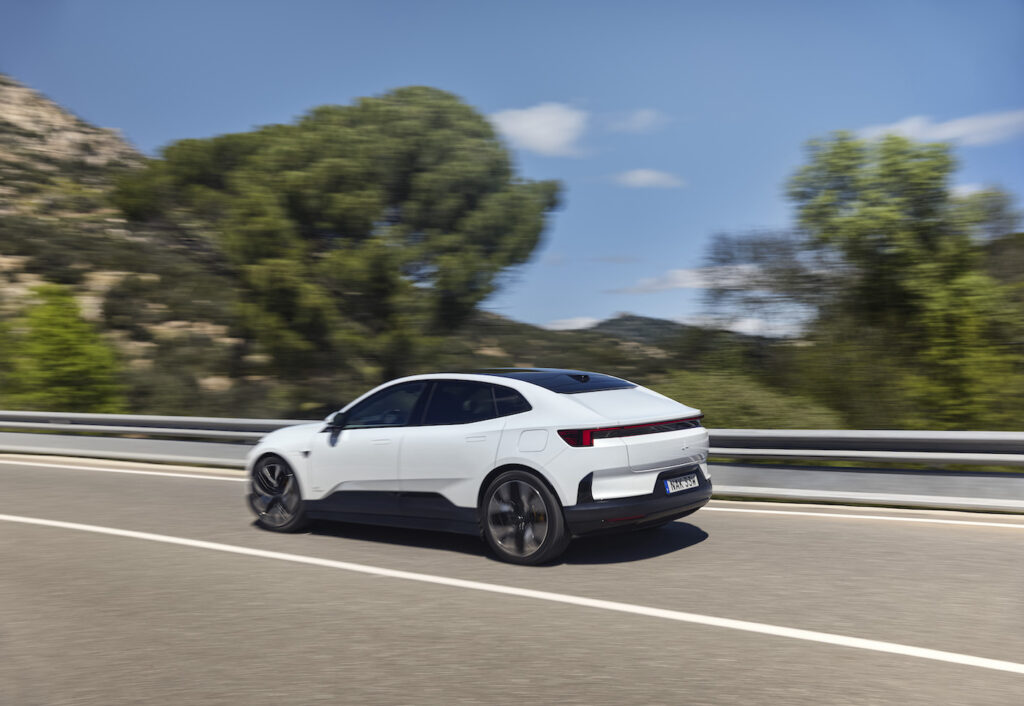
Let’s tackle that elephant in the room that we mentioned earlier first shall we? That lack of a rear windscreen. There’s what looks like a traditional rear view mirror that features a rear camera display that works perfectly well to see what’s behind you, but it still takes some getting used to.
For starters, it takes a split second for your eyes to focus on the screen as opposed to a normal mirror when glancing up and we found that quite annoying. It also takes a bit of getting used to that you can’t see rear passengers in the mirror.
The biggest issue however is when pulling out of junctions when you’re looking over your shoulder such as when pulling out of angled T-junctions for instance. The rear three-quarter vision aspect is especially poor with the C-pillar and lack of rear screen blocking your view. Cameras can also get dirty and block vision with rain droplets too as we’ve had experience of with parking cameras.
It’s clearly a form-over-function thing that has been done for aesthetic rather than practical reasons. We applaud doing things differently, but for us this is a step too far. If it really is a technical advance, then why not go for camera door mirrors as others have done?
That’s a shame as other elements of the way the 4 drives are quite impressive. The ride is especially good and there’s little road or wind noise or body roll through corners, plus there’s a decent amount of grip too. It’s certainly a very comfortable drive, but what it isn’t, however, is especially sporty, despite those sleek exterior looks.
In fact, there’s a slightly odd manner overall in the way that the Polestar 4 drives. It has all the above attributes, but the steering seems to let it down. Firstly there’s the fact that doesn’t quite self-centre as fast as you think it should and think it might. A couple of times we found ourselves having to manually wind lock back off the car when we would have expected it to done so automatically.
It’s also very sharp to turn in but the steering feels very clinical and slightly anodyne, not giving the driver the full amount of information about what’s going on beneath them. In short then, there’s nothing especially wrong with it, but we were certainly expecting a car that was a bit more involving.
Using the touchscreen, you can also tailor the steering (light, standard and firm) and suspension (standard, nimble and firm) as well as the regenerative braking at three different levels (off, low and standard). The reality is though that it’s not as simple to switch between modes on the move as you might think and many are likely to find a setting that they’re happy with day-to-day and leave it.
The regenerative braking could be stronger in the full standard mode and offer more of a one-pedal experience, although rather oddly it doesn’t feel linear in its braking power, seemingly getting stronger as the speed drops.
POLESTAR 4 – INTERIOR
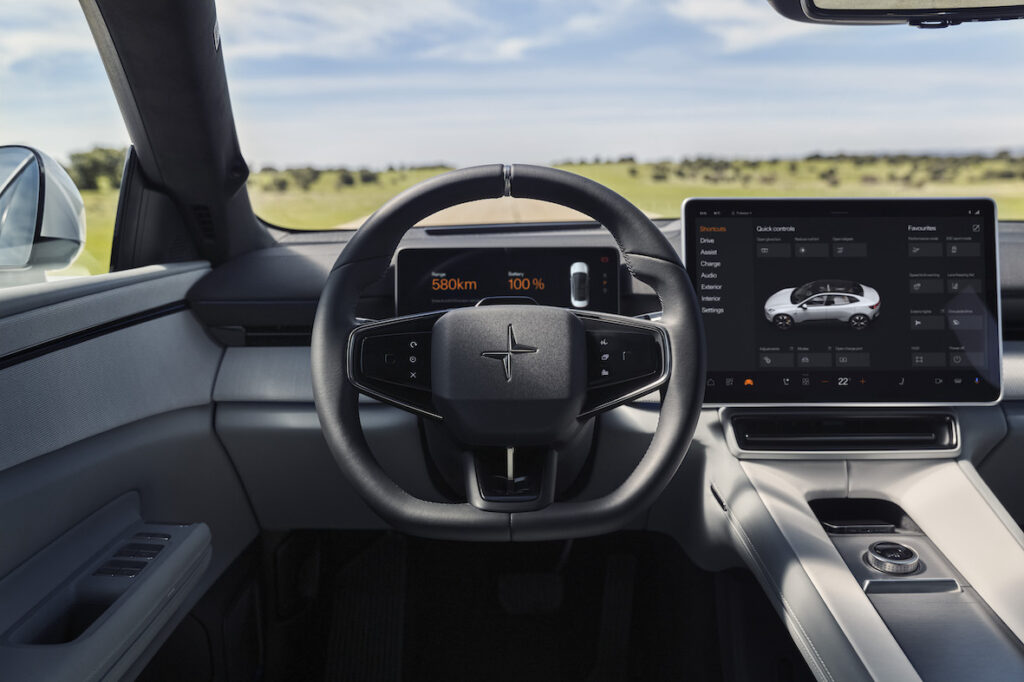
We’ve already tackled the issue of the rear view mirror, so let’s look at the rest of the interior. Like its Volvo parent brand, Polestar has opted for a very clean interior dominated by a large touch-screen that’s in landscape format (ironically the 3 SUV has its own screen in portrait layout).
There’s decent storage, it looks smart and the main details on a separate screen ahead of you are clear and easy to read. The problem is, even if you do like having screen-dominated controls, we think this is overkill.
Not only are all the ventilation and temperature controls on the touch-screen, but so are the directions of that ventilation. So if you want the face vents aiming straight at your face or further down, then those need to be done via the touchscreen – something that draws your eyes away from the road ahead for a longer time than is comfortable. And that’s a basic movement that would normally take less than a second in any other car – and again, is done so manually in the 3, rather oddly.
Moving the steering wheel or the door mirrors or even unlocking the glove box, they’re all on the screen and, for us, that’s just not safe. Will a regular driver get used to it and find these controls faster than us on our test drive? Almost certainly. But for us, Polestar is providing answers to questions nobody ever asked and also over-complicating basic control functions.
In the back there’s a lot of head and legroom and also electric controls too and it’s certainly not as claustrophobic as you might think thanks to that extended panoramic roof. The boot has 526 litres of space and the rear seats fold down as does a small parcel shelf, leaving a large loading space. It’s better than a normal saloon but it’s still not quite as practical as a traditional hatchback.
SUMMARY
There’s a lot to like about the Polestar 4. It certainly has the looks to turn heads and represents something different in the market which we sincerely applaud.
However, we have two large issues with the 4. The first is that the technical cleverness of the car – the lack of that rear windscreen and the domination of those touchscreen controls seem to have been undertaken due to engineering vanity rather than any sense of functionality or everyday usability of the car. Just because you can do something, it doesn’t necessarily mean you should.
The second is that that inherent different-ness makes it difficult to imagine who will buy the car and whether people will be willing to look beyond those idiosyncracies. Polestar is still a growing brand and to alienate potential buyers just with the lack of that rear windscreen, a design that’s wholly unnecessary, seems to us commercially unwise.
There’s no question that the Polestar 4 will have plenty of appeal, but whether it could be at a volume to be considered a success is another matter.
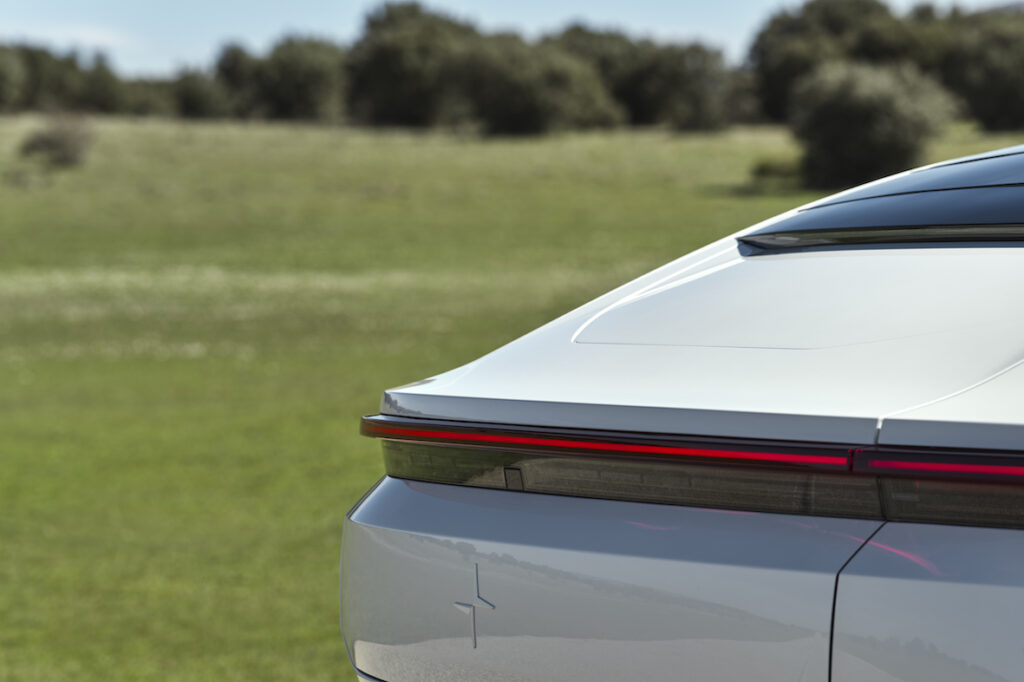
FACT BOX
Model: Polestar 4
Price: from £59,990
Power: Battery – 100kWh
Range: 367-385 miles
Average efficiency: 3.5mls/kWh (E)
Average charge time on a domestic wallbox: 13.5hrs
CO2 emissions: 0g/km
Rating: 7/10

